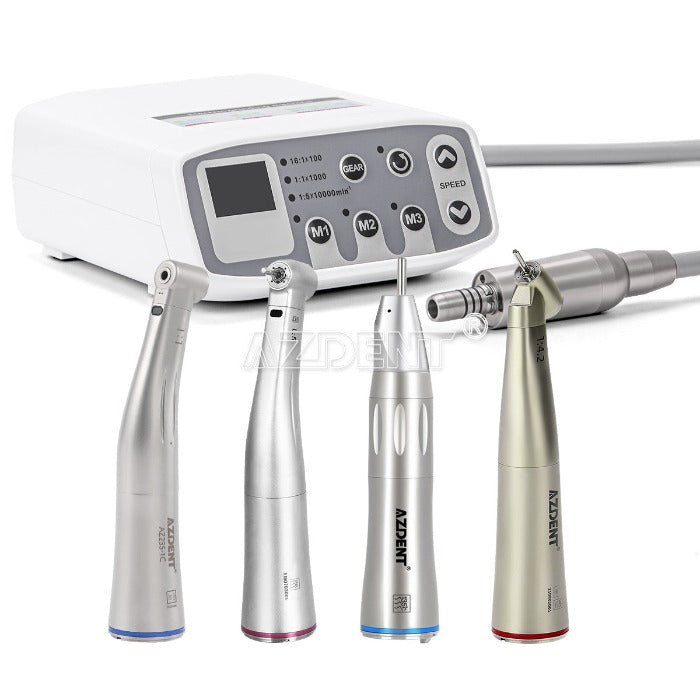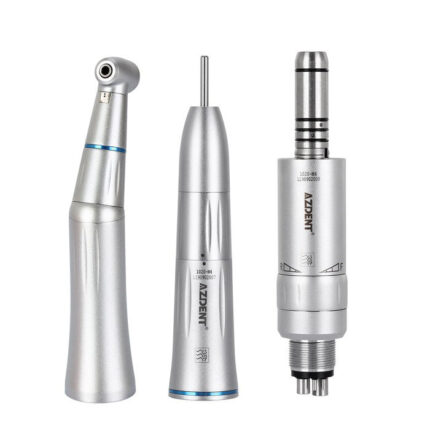No products in the cart.
LegalRoids
The Advantages of Electric Handpieces in Modern Dentistry

The Advantages of Electric Handpieces in Modern Dentistry
The field of dentistry has seen significant advancements over the years, and one of the most transformative innovations is the electric handpiece. These devices revolutionize dental procedures by offering precision, efficiency, and enhanced patient comfort. For dental professionals looking to elevate their practice, understanding the benefits of electric handpieces is crucial. To learn more about available options, visit electric handpiece https://dentaprof.com/collection/handpieces/electric-handpieces/.
1. Precision and Control
One of the most important advantages of electric handpieces is their ability to deliver greater precision and control during dental procedures. Unlike traditional air-driven handpieces, electric models provide consistent torque, allowing dentists to perform intricate tasks without interruption. This level of control is particularly beneficial during procedures that require accuracy, such as endodontics or cosmetic dentistry.
2. Reduced Noise Levels
The electric handpiece operates at significantly lower noise levels compared to pneumatic systems. This reduction in noise can greatly influence the patient’s experience, as the dental clinic environment often contributes to anxiety. A quieter handpiece can help create a more calming atmosphere, reducing patient stress and improving overall satisfaction.
3. Enhanced Patient Comfort
Electric handpieces are designed with patient comfort in mind. Their lightweight construction and ergonomic designs make them easier for dental professionals to handle, reducing hand fatigue during long procedures. Additionally, many electric handpieces come equipped with features that minimize vibrations, thereby enhancing comfort for both the dentist and the patient. When patients feel comfortable and cared for, they are more likely to return for follow-up treatments and recommend the practice to others.
4. Improved Efficiency
Time is of the essence in a busy dental practice. Electric handpieces can significantly improve operational efficiency. Their ability to provide consistent power allows dentists to complete procedures more quickly without sacrificing quality. This efficiency not only maximizes the use of time during appointments but can also increase the overall number of patients a clinic can serve in a day.
5. Versatility in Procedures
Electric handpieces are incredibly versatile, capable of handling a wide range of procedures, from routine cleanings to complex surgeries. With different attachments and burs available, practitioners can easily switch between various tasks, making electric handpieces an essential tool in any dental practice. This versatility allows for more comprehensive treatment options, catering to a diverse clientele.
6. Consistency and Reliability

Electric handpieces are known for their reliability and consistent performance. With fewer moving parts and a robust construction, they are less susceptible to malfunctions. Regular maintenance can keep these devices in optimal condition, and their durability often translates to lower long-term costs compared to traditional handpieces, which may require more frequent repairs or replacements.
7. Safety Features
Modern electric handpieces come equipped with advanced safety features that protect both the patient and the practitioner. Integrated cooling systems prevent overheating during use, which can be critical in avoiding discomfort and tissue damage. Additionally, many electric handpieces feature auto-stop mechanisms, shutting down when not in use to minimize risks of accidents.
8. Technological Integration
As dental technology continues to advance, electric handpieces are also evolving. Many models now offer compatibility with digital systems and can even integrate with other technologies in the practice, such as CAD/CAM solutions. This integration enhances the overall workflow and opens up new opportunities for innovative treatments and procedures.
9. Cost-Effectiveness in the Long Run
While the initial investment in electric handpieces may be higher than traditional options, the long-term benefits often outweigh the costs. Their durability, efficiency, and lower maintenance requirements translate into significant cost savings over time. Additionally, these handpieces can enhance patient turnover and satisfaction, leading to more revenue as a result of increased business.
10. Training and Adaptation
Transitioning from a traditional air-driven handpiece to an electric model may require some initial training and adaptation. However, many manufacturers provide comprehensive training programs and resources to ease the process for dental professionals. Investing time in learning how to effectively use electric handpieces can yield excellent dividends in terms of improved practice operations and patient experience.
Conclusion
In conclusion, electric handpieces offer a multitude of advantages that can elevate dental practice standards significantly. Their precision, comfort, efficiency, and adaptability make them an indispensable tool for modern dentists. As dentistry continues to evolve, incorporating electric handpieces into practice can enhance patient outcomes and streamline workflows, ultimately leading to a more successful practice. Embracing this technology will not only benefit dental professionals but also improve the overall experience for patients, making visits to the dentist more efficient and pleasant.
